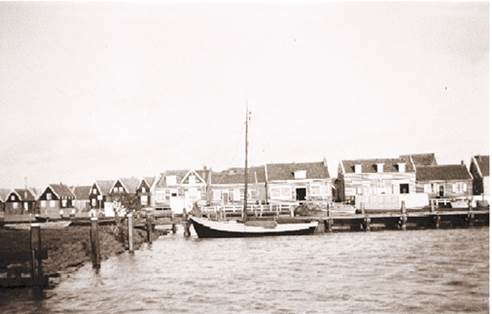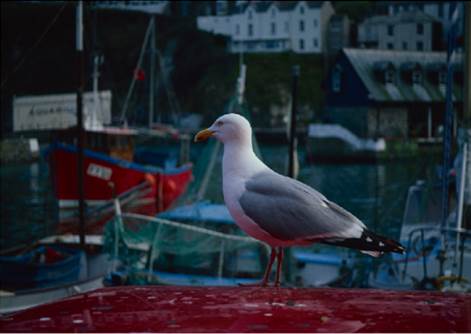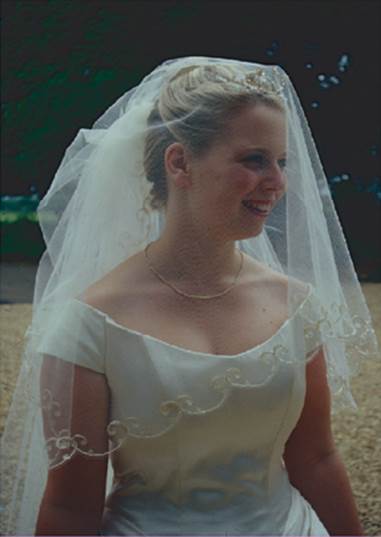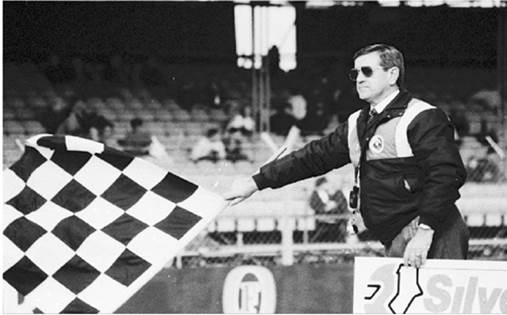Design
The device itself is made from high quality
plastic attached to metal case. Measuring 210x374x189 mm, the scanner only
takes as much space as a small printer. You should leave a wide gap to the
front and rear for the plastic film carriers to slide through the scanner.

The
scanner's base takes little space
Film holders are very certain. The film
holder used magnetism catches to keep the films in fixed position. Film from 5
slides or less is fixed to the frame and negative film from 12 slides or less
is sorted into 35mm frame very easy. The carrier is loaded on the front and
will fit into the delivery mechanism which will drag it into later. Infrared
dust and scratch removal technology is now well established, and is invaluable;
however, it does degrade the original film quality and is no substitute for
spending time ensuring the medium to be scanned is as clean as possible.
The front panel has 2 buttons, 1 button to
cut out the power source, push the holder out and a separate push button. The
scanners take no time to warm up when it is switched on and you can start the
scanning process as soon as the supported software is ready.
Performance
The Pros of the Plustek Opticfilm 120 is
its capability of batch scanning and a maximum resolution up to 10600 DPI.
Pre-scan Scanner uses the 35mm film holder that can handle 12 frames per 1
minute. The batching scan mode is triggered when you select the 'Job manager'
(Job Man) in the film scan setting (select at the top left corner window), and
then select the 'overview'. At this point, you can select your scanning frame
and close the dialog box. Your preferences will now show on the Job Manager.
Every time you double-click an image will allow you to review it in about 35 '.
Now images can be sorted and delivered to the improved image as you'd expect,
these settings are saved in the SilverFast software for the last continuous
scanning process. When you're satisfied with those settings, the batch scan can
be invoked, which brings up a dialogue for you to choose where to save the
files. 35mm slides were taking about one and a half minutes and negatives with
multi exposure 3 minutes to batch scan.

18MB
JPEG images taken by Box Camera
Some black and white negatives measuring 6
x 8.5cm from a box camera batch scanned at full resolution were taking seven
minutes each. For some reason the software was not inverting the negatives on
the scan, but displayed them as positives. This problem occurs only with these
black and white negatives on the Windows 8 installation, and all the 35mm
negatives scanned came out fine.
Color
negative test

Plustek
120's color negative is very detailed.
Negatives scan well with colors being
reproduced accurately. The 'Negafix' option allows you to select color
correction settings from a list of popular film types.
Color
Transparency test

Color
Transparency test
The intensity of the red at the bottom of
this image appears a little artificial, and the darker areas could have been a
little lighter, overall though it’s not that bad considering only automatic
settings were used. When the original slide lacks dynamic range, HDR or
multiple-exposure is not advisable.
Skin
tone test

Picture
with automatic settings displays beautiful skin tone
This scan of the bride shows a pleasing
skin tone, with good detail retained in the highlights of the white dress and
the darker areas of the image with slightly better dynamic range than the previous
Plustek scanner tested, particularly in the darker shadows.
Black
and white test

Black
and white photos from the Plustek 120
A good range of tones are captured are
captured when scanning black and white negatives.
Conclusion
With this scanner Plustek has introduced
carrier feed, allowing for batch scanning, to fill a gap in both medium format
and batch scanning. If the automatic settings haven't produced the expected
results, fine tuning may be achieved with the wide choice of color correcting
options. In this section, drum scanners are the main competitors. They use wet
mounting to minimize surface imperfections, which is a techniques I am looking
forward to check out. Costing around $3,034, it's hard to evaluate given the
lack of comparable products. Currently, Reflecta Midformat MF5000 scanner was
released in Oct 2011, is the main competitor of Plustek products. Its
resolution of 3200 does not match up to the Plustek 120. The Plustek 120 offers
medium format scanning, as well as batch scanning, at a high resolution with
reliable software delivering excellent results, and considering the features
and results available from this scanner it is good value for money.
Pros
·
Scanning at high resolution
·
The ability of batch scanning
·
Multi-Exposure feature
·
Supported software is easy to use
·
Multi-format support
Cons
·
Slightly expensive
·
No wet mount facility
Rating
·
Features 4/5
·
Design 4/5
·
Performance 4/5
·
Value for money 4/5
·
Overall 4/5
|
Specification
·
Optical resolution 5300dpi
·
Digital resolution 10600dpi
·
Static range: 4.01Dmax
·
Color depth: 48bit/pixel
·
Scan methodology: LED/CCD
·
USB: USB 2
·
Package Scanner, SilverFast Ai Studio 8
software and user manual, device charger, Plustek OpticFilm 120 user manual ,
film holder: 35mm film strips, slides, and 120/220mm film from 6x4.5cm up to
6x12cm in sizes, USB cable.
·
Weight: 5,700 g
|